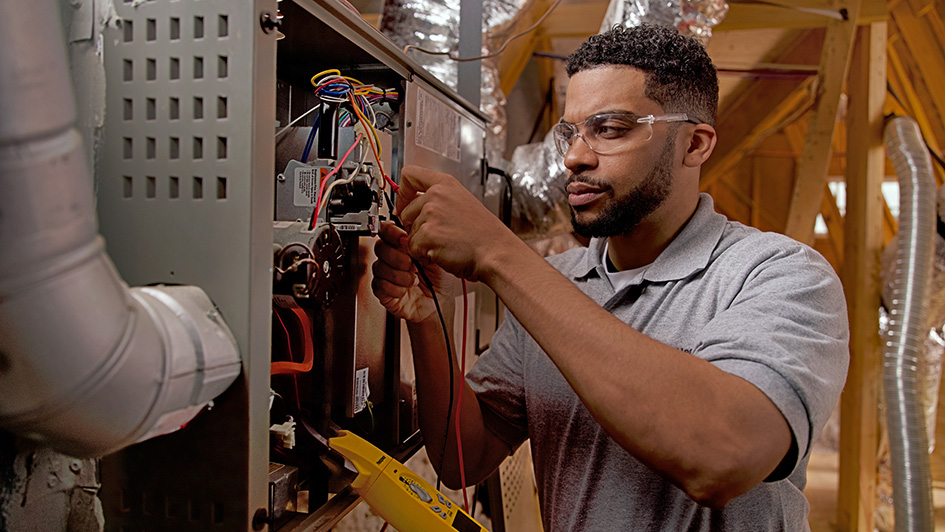
A furnace is usually a background player in your home, keeping you warm across the cold winter months. It frequently won't be noticed until a malfunction appears.
One root cause may be that your furnace has a cracked heat exchanger. It’s a potentially dangerous issue, so it’s worthwhile to know the signs of a cracked heat exchanger and what you should do if you suspect that might be the problem.
What Is a Heat Exchanger in a Furnace?
A heat exchanger transfers heat from the combustion chamber in your furnace to the air that moves through the system. It usually accomplishes this via coils or tubes that heat up the air while serving as a barrier to keep the gasses formed in the combustion chamber, called flue gasses, from leaking out into your home.
Is a Cracked Heat Exchanger Dangerous?
Thanks to its important role, it shouldn't come as a surprise that a cracked heat exchanger can be hazardous. Cracks in the heat exchanger can permit dangerous gasses – such as carbon monoxide, which can be lethal – to be distributed across your home.
For this reason, never run your heater if you think it has a cracked heat exchanger, as doing so could make the whole family sick. Reach out to an HVAC professional as soon as possible if you believe your heater has a cracked heat exchanger that needs repair.
Four Symptoms of a Cracked Heat Exchanger:
- Furnace switches off: A cracked heat exchanger can cause your furnace to shut off.
- Odd Smells: If the air coming out of your furnace has a strong chemical odor, it might be evidence gas is seeping through cracks in your heat exchanger. These byproducts, which can smell like formaldehyde, are a common warning sign.
- Carbon monoxide alarm initiates or you recognize symptoms of poisoning: If a cracked heat exchanger is relieving carbon monoxide into your home, your carbon monoxide alarm may go off or family members could start experiencing signs of carbon monoxide poisoning. Symptoms include headaches, dizziness, weakness, nausea, vomiting or feeling drowsy. If an alarm goes off or you feel sick, leave the home immediately and then call for help.
- Soot: If you find black sooty accumulating near the exterior of your furnace, it’s another sign something may be seriously wrong.
What to Do if the Furnace Heat Exchanger is Cracked
If you believe your furnace has a cracked heat exchanger, contact a professional with extensive experience in furnace installation Crystal and Twin Cities right away so they can examine your system and, if required, perform a furnace heat exchanger replacement. Costs often fluctuate depending on the situation, but estimates run in the neighborhood of $1,000 to $3,000.
However, the good news is that heat exchangers are often covered by the warranty. You’ll want to check the warranty paperwork on your furnace, since while the warranty won't always cover the entire cost of repairs, it can significantly reduce your bill.
How to Prevent a Cracked Heat Exchanger in Your Home
One of the best ways to prevent a problem in your furnace overall is through routine furnace maintenance. Furnaces work the best when they run efficiently. Calling a trained professional to inspect your furnace for old parts, clogs in the air filters and other likely problems can help you avoid getting a big bill later on.
It’s also helpful to review your furnace filters every few months – it’s encouraged some filters be replaced every 90 days or sooner if they are dirty or grimy. While the filters aren't a part of the heat exchanger itself, the strain of pulling air through a clogged filter makes your entire furnace work more vigorously to do its job. And the harder your furnace has to work, the more strain pieces like the heat exchanger will endure.



